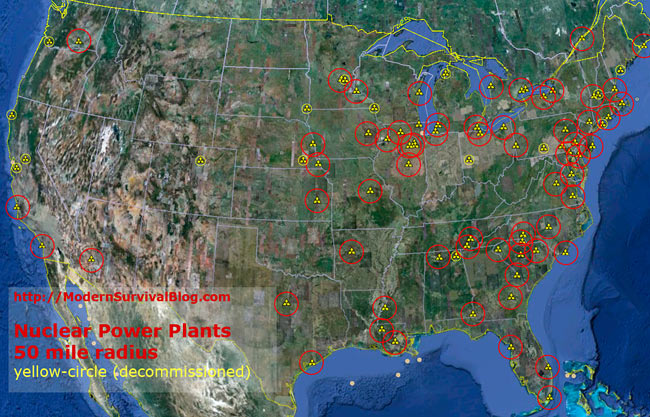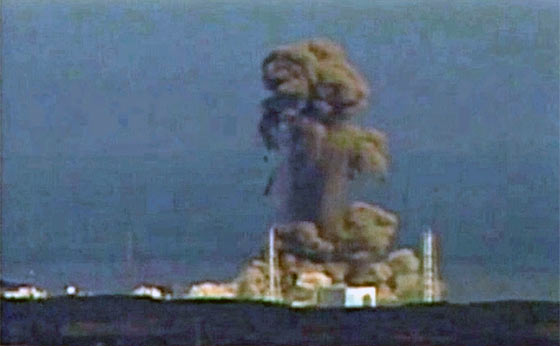Nuclear Power Plant Meltdown – 50 Mile Radius
Have you wondered where the safest or safer place would be from a nuclear power plant?
What if there was a disaster leading to a nuclear meltdown?
You better be at least 50 miles from a nuclear power plant, and preferably not in a downwind location based on the prevailing winds (which are typically and generally west to east across the U.S. – with variations thereof)…
IMPORTANT: iOSAT Potassium Iodide Tablets, 130 mg (14 Tablets)
(Full size map below)
Here’s the thing…
IF we were to experience a disaster which brings down our electrical power grid, or even a region thereof (‘Carrington’ Event?), (an EMP?), those who are living near a nuclear power plant will be at high risk due to the potential for nuclear meltdown.
All you have to do is look back at what happened at Fukushima Japan following the earthquake, tsunami, and core meltdown. An enormous region of land surrounding that power plant became uninhabitable.
Nuclear power plants need electricity to keep their enormous water cooling pumps working. Without their cooling pumps, a nuclear meltdown will be assured.
While nuclear power plants do have backup diesel power generators, there are circumstances whereby these generators could be rendered useless.
How long can a nuclear power plant operate with their generators? Until they either run out of fuel or until they break down.
I have built the following map which indicates the location of all the operating nuclear power plants in the United States. I have added a 50 mile radius (100 mile diameter) circle around each one.
RADEX RD1503+ High accuracy Geiger counter
I have chosen a 50-mile radius as a reasonable distance factor, given that generally speaking – any radioactive fallout will dissipate according to the inverse-square-law.
Wind patterns WILL affect this however, and the method of fallout will also affect the spread pattern (explosion and altitude versus meltdown, etc..).
That said, I believe this is a reasonable guideline to consider as a minimum and perhaps somewhat safe distance from a nuclear power plant – for starters…


